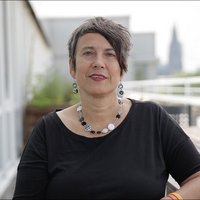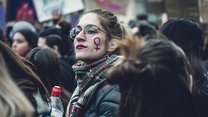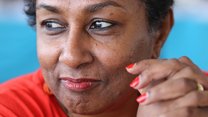Sexism: Discrimination against women and girls
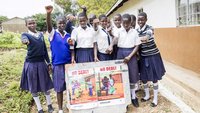
Gender-specific discrimination and breaches of human rights have fatal consequences for the health, education, income and safety of women and children. In spite of numerous treaties and laws intended to help ensure equal rights and protection for women and girls, the part of the world’s population seen by others to be female still frequently experiences discrimination, abasement and violence.
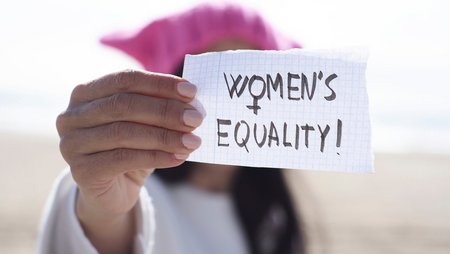
Sometimes discrimination is not immediately obvious. Examples are a lack of promotions for women, or an education for girls which leads them to believe they are no good at mathematics. In contrast, discrimination is sometimes very obvious and easily measurable: How high is the proportion of women in parliament? How many girls are completing secondary education? Further, women and girls are also frequently affected by several different forms of discrimination at the same time: due to their ethnicity, their sexual orientation, their age and/or their migration background, for example.
Definition: What is discrimination?
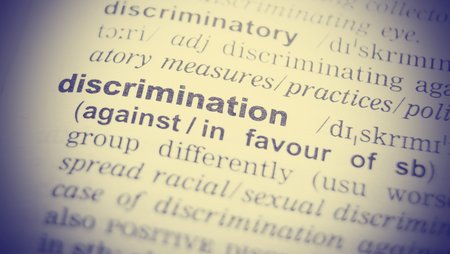
Discrimination is a breach of human rights. People are unjustly disadvantaged, abased and/or treated as inferior because they belong to a group that has particular characteristics or features. These characteristics could include, for example, gender, ethnicity or religion. Discrimination generally occurs because of particular value judgments, unreflected or even subconscious attitudes, and prejudices.
Definition: What is sexism?
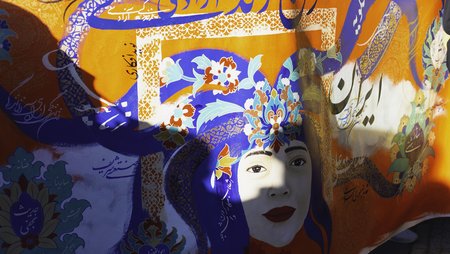
Sexism is a synonym for gender-based discrimination. If a person’s biological sex or gender is the reason for someone else discriminating against them, then this is sexism. In general, sexism happens because of underlying attitudes that consider women to have less value than men, so this form of discrimination is usually directed against people who are seen as female or feminine. Of course, sexism can affect males as well. Closely connected to sexist discrimination are the notions of specific social activities and characteristics being more suitable for either males or females (‘gender roles’) and other stereotypes which are attributed to a person on the basis of sex or gender. Sexualised violence is one form of gender-based violence and is one way that sexist discrimination manifests. The term sexism was coined by the American women’s movement in the 1960s, combining the word ‘sex’, to refer to the biological sex, with the ending ‘-ism’ from another common form of discrimination: racism.
What are the causes of sexism?
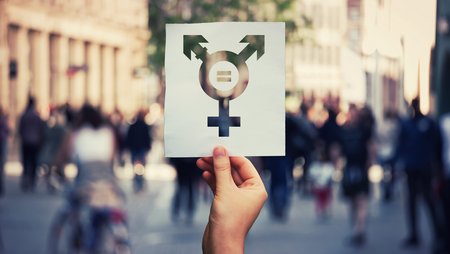
Various studies show: The main causes for gender-specific discrimination are to be found in
- misogynist attitudes, values and role models,
- norms shaped by patriarchy, and
- cultural and religious practices.
There is a systematic nature to the disadvantages put in the way of women and girls in their access to food, healthcare, education and income. It is anchored within societal structures.
What is gender?
In English, the two terms gender and sex are sometimes used interchangeably, but sex often refers specifically to biological differences, while gender more often refers to cultural and social differences. Gender therefore refers to socially constructed norms, assignments and roles which can be different from one society to another. Where someone assumes a gender role which is visibly different from their biological sex, this can also trigger discrimination.
FAQ: What forms does this discrimination take?
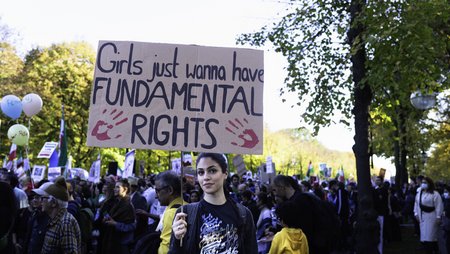
Structural discrimination is a term used when the discrimination against individual groups is caused by the way that a society is organised. For example, a patriarchal society will have patriarchal gender structures that lead to discrimination against women. Structural discrimination frequently culminates in violence: for women and girls between 15 and 44, the risk of experiencing rape and violence within their family is higher than risk of becoming a victim of a traffic accident, war, cancer or malaria.
Direct discrimination is generally easy to recognise, especially in the form of laws and regulations. One example was in 2015 in Sierra Leone, where a law was introduced which prohibited pregnant girls from attending school.
Indirect discrimination is often more difficult to recognise. One example would be at a workplace where the company does not offer any chance of promotion to part-time employees: if part-time employees are overwhelmingly female, then this discriminates indirectly against women.
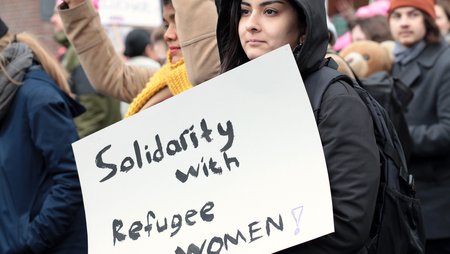
Intersectional or multiple discrimination is present when a person is affected by different forms of discrimination at the same time. One form can impact on another and they can even amplify each other. For example, refugee women frequently suffer both sexism and racism.
Discrimination is extremely closely related to both the abuse of power and the retention of power. This is often combined with humiliation, such as in the cases of bullying and mobbing. Another example is sexualised harassment, which is a consequence of structural discrimination in the context of patriarchal power relationships. Suggestive looks, undesired touches, or sexualised comments are used by one person in front of others to demonstrate their superiority and power over women or people who deviate from prevailing gender norms, to humiliate them, and to devalue them. Violence is also a means to preserve power.
The term patriarchy is derived from Greek and literally translated it means “rule of the fathers”.
Patriarchal power extends well beyond the immediate family. It includes a social order which gives men a privileged position of power in all spheres of life. From this position of power, men then determine the values and norms of the society and lay down the laws governing the behaviour of women and other marginalised groups, such as LGBTIQ*, people with disabilities, or people of colour.
From a feminist perspective, patriarchy refers to the totality of the exploitation and oppression of women. This oppression is systemic. At its core is the sexual control exercised by men over women.
Efforts to adopt gender-neutral or gender-inclusive language include, for example, the avoidance of a generic masculine ‘he’ when referring to humans in general. In some languages, nouns and terms for professions, for example, have an inherent gender indicated by a particular word-ending. So efforts need to be made not to exclude women and non-binary people. One example could be using the term police officer instead of the term policeman. This is important because language influences how we think and feel. For example, references to “manned spaceflight” might lead to the subconscious association of astronauts as being typically male, whereas the conscious use of “crewed spaceflight” would be inclusive because the word “crew” covers all possible genders.
Definition: Gender equality
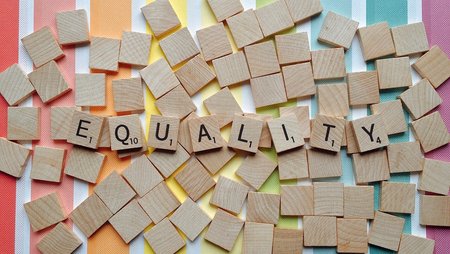
The equal rights of the genders is a fundamental human right. Equal rights means that all humans have the same rights. The term is based on Articles 1 and 2 of the Universal Declaration of Human Rights, which state that all humans are “born free and equal in dignity and rights”, so should not be discriminated against due to their gender or other reasons. Often, equal rights is talked about in connection with equal opportunities. Equal rights does not mean that all humans are the same or should be the same.
What is the difference between equality and equal rights?
The principle of equal rights emphasises the same rights to be enjoyed by all people, regardless of their gender. In contrast, the principle of equality aims to overcome structural discrimination to such an extent that women and men not only receive the same rights and opportunities, but also achieve the same results from these. Examples here would include equal proportions of the genders among members of parliament or on the boards of leading companies. One way of achieving this could be setting quotas.
How equal rights would benefit everyone
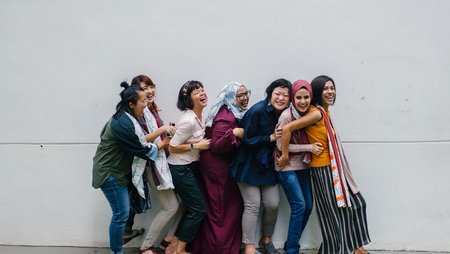
Gender justice is more than merely a question of human rights: the equal participation of women in all aspects of life is also a prerequisite for a peaceful, just and sustainable world. Some figures:
- An increase of 30% would be seen in agricultural yields if all women had fair access to the means of production.
- Where women are involved in peace negotiations, the chance of these agreements being upheld increases by 20 per cent.
- Violence against women and girls is widespread around the world in all cultures, religions and societies. It is rooted in the power imbalance between the genders. Actual equal rights and the dismantling of these power imbalances would take away the basis for this violence.
- Studies have shown that the nourishment, health and education of children all improve when their mothers have more income available.
- According to McKinsey management consultancy, companies with higher proportions of female staff are more likely to be successful.
- Data from 90 countries indicates that countries with higher female parliamentary representation are more likely to set aside protected land areas. Another study in 130 countries showed that women are more willing to ratify international environmental treaties .
Equal rights – on the statute books or in practice?
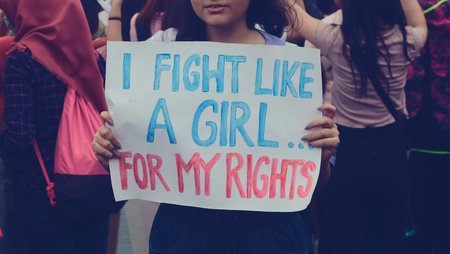
The Universal Declaration of Human Rights in Article 1 states that all people are equal. Article Two of this proclamation by the United Nations (UN) goes into more detail: “Everyone is entitled to all the rights and freedoms set forth in this Declaration, without distinction of any kind, such as race, colour, sex, language, religion, political or other opinion, national or social origin, property, birth or other status.” However, the rights that the UN General Assembly agreed in 1948 are still being violated decades later, are still not enshrined in national laws, are still not being upheld by political means, and are therefore still not a lived experience for many.
The Convention on the Elimination of All Forms of Discrimination Against Women
In 1979, the General Assembly of the United Nations passed the Convention on the Elimination of All Forms of Discrimination Against Women (CEDAW). Known as the Women’s Rights Convention, this Convention on the Elimination of All Forms of Discrimination Against Women obliges the states ratifying it to take active steps to eliminate the discrimination against women in the areas of culture, society, education, politics and legislation.
Examples: Discrimination against women and girls around the world
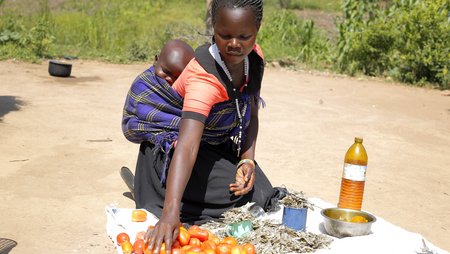
Right to social welfare
Nutrition: Where food becomes scarce, it is the women and girls who suffer most from hunger. With regard to those suffering moderate or severe food insecurity, the difference between men and women increased further during the Covid-19 pandemic. In 2021, food insecurity affected 150 million more women than men in the world.
Poverty: During the Covid-19 pandemic, millions of women lost their jobs and livelihood. Sectors with higher proportions of women workers were most severely affected by the consequences of the pandemic.
Right to own property
It is women who frequently lose out on access to land: less than 20 per cent of landowners worldwide are women. However, it is the women who perform the major share of the work in the fields.
Right to education
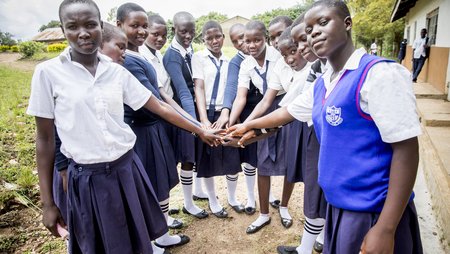
First, the good news: Looked at globally, the rates of schooling for both primary and secondary levels are increasing for girls and boys. However, in the countries affected by insecurity, conflicts and violence, girls are 2.5 times more likely than boys to be prevented from going to school. At secondary level, this probability is 90% higher. Almost two thirds of all adult illiterates are women.
Right to life, liberty and security of person
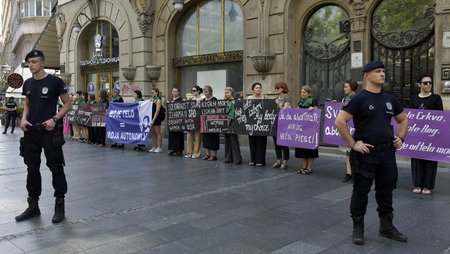
Forced marriage: Estimates are that 12 million underage girls are forced into marriage each year.
Physical self-determination: Globally, pregnant people do not have easy access to safe and legal pregnancy termination. Abortions are often not even possible for women who were raped during wars and become pregnant as a consequence. This is not only because of the lack of medical possibilities, but mainly because pregnancy termination is forbidden by the provisions of international funders or restrictive laws and interpretations of faith. For example, since 2021 abortions have been either illegal or very difficult to access in Poland, Hungary and the USA. As a consequence 45 per cent of all pregnancy terminations around the world take place in unsafe conditions – sometimes with fatal consequences for the women: unsafe abortions are one of the most frequent causes of maternal mortality.
Violence: Almost one in three women will be subjected to violence during her lifetime. Globally, each year some 50,000 women are killed by their partner or a relative. Female genital cutting (also known as female genital mutilation, FGM) is a violation of human rights. In spite of international condemnation and national laws, more than 200 million women and girls have been subjected to FGM. In one out of every four cases, the girl dies from the consequences. Most of these were not older than 15 years when the violent cutting occurred.
Human trafficking: 72 per cent of all victims of human trafficking are women or girls. Most of these (77 per cent) are exploited sexually and/or forced into prostitution.
Wars and conflicts: In almost every conflict, warring parties use sexualised violence as an instrument of power to terrorise their enemies. Violence and sexualised attacks are also faced by women and girls as they flee their homes seeking refuge or after being displaced by advancing forces.
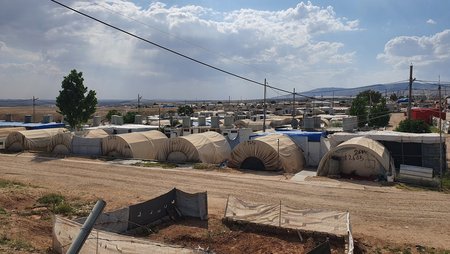
Humanitarian aid: In emergency situations, the stress and pressure on women and girls grow because they are the ones who usually look after children and sick relatives, find and cook food, and take care of the home. However, humanitarian aid projects are often designed with too little consideration for this. For example, in refugee camps there may be no access to or space for gynaecological and obstetric healthcare, or even gender-separate toilets and washing facilities. Registration for aid generally occurs in the name of the male head of household, which denies wives, mothers and daughters any independent access to assistance.
Climate change: In many rural areas of Africa and Asia, it is still usual for women to work near their home. This means they often receive life-saving information about disasters or severe weather later than men or not at all. This is one reason for the higher female fatalities in the wake of natural disasters. Additionally, in emergency accommodation there is an increased risk of sexual harassment.
Political representation
Worldwide, 26 per cent of members of parliament are female. In most of the countries where the proportion of women in parliament is above 30 per cent a quota ruling had been introduced in order to strengthen political participation of women. With success: In Rwanda the figure of 61 per cent (as of April 2022) is the highest proportion of women in parliament in the world. In Cuba it is more than 53 per cent and in Mexico 50 per cent. In 28 of 193 countries, women are head of state or government, including , Bangladesh, New Zealand and Tanzania.
Discrimination against women in Germany – some examples
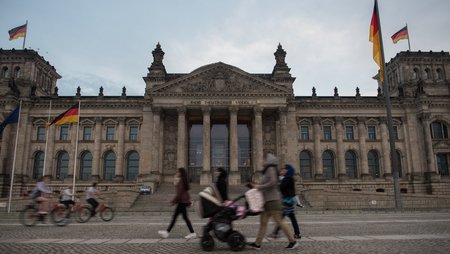
Women face discrimination in Germany. Four examples:
Politics: 34.7 per cent of the Members of the Bundestag are women (after the election in 2021). Twelve federal states are governed by men, only four by women. At a local level, the differences are even more severe: In 2021, 80 per cent of German mayors were male.
Economy: Female staff earn on average 18 per cent less than their male colleagues. The income gap has reduced a little in recent years, but in comparison to the European average (13 per cent), the gender pay gap in Germany is still high. Furthermore, women face professional disadvantages due to pregnancy and maternal leave, and are less likely to be selected for promotion.
Legislation: §218 of the German Penal Code violates the right to self-determination. Women who want to terminate their pregnancy, and all of those involved in carrying out abortions, are being criminalised. This is the case despite access to legal and safe abortions being a human right.
At home: Statistically speaking, once every 2.5 days in Germany, a woman is killed by her partner or ex-partner. In 2021, 161,000 survived what is euphemistically called ‘domestic violence’ – two thirds of them were women.
From the practical experience of our partner organisations: Against sexism
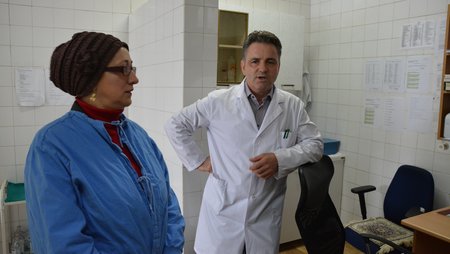
Ensuring the right to healthcare
Violence against women is a worldwide problem, but in war and post-war countries the rates are particularly high. Compared with the great need, there is very little provision of assistance for those affected. The staff of healthcare clinics have generally not received appropriate training. Frequently, healthcare professionals exhibit prejudices and discriminatory behaviour when treating survivors, leading to stigmatisation and feelings of shame. Our partner organisations train doctors, midwives and nursing staff locally. They learn how to offer beneficial support to women affected by violence. In a second step, these specialist staff then learn how to pass on the training to their colleagues. In this way, the knowledge about trauma-sensitive support can be anchored in their community for the long term.
Appeal against a ban on pregnant girls attending school
In Sierra Leone, a law was passed in 2015 that prohibits pregnant girls from attending school. The law is unconstitutional. This affects a large number of girls since the pregnancy rate for under-18s is one in three. A group of activists took legal action against this – successfully. One of the plaintiffs was the organisation WAVES (Women Against Violence and Exploitation Society), which medica mondiale has been cooperating with since 2019.
